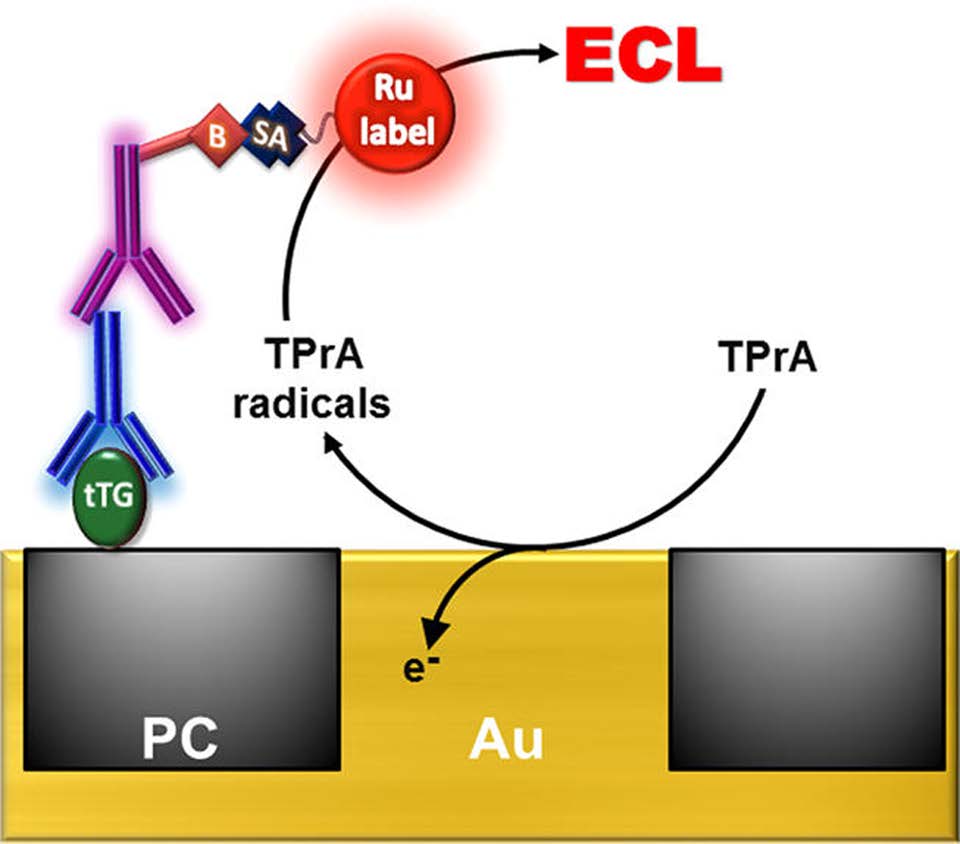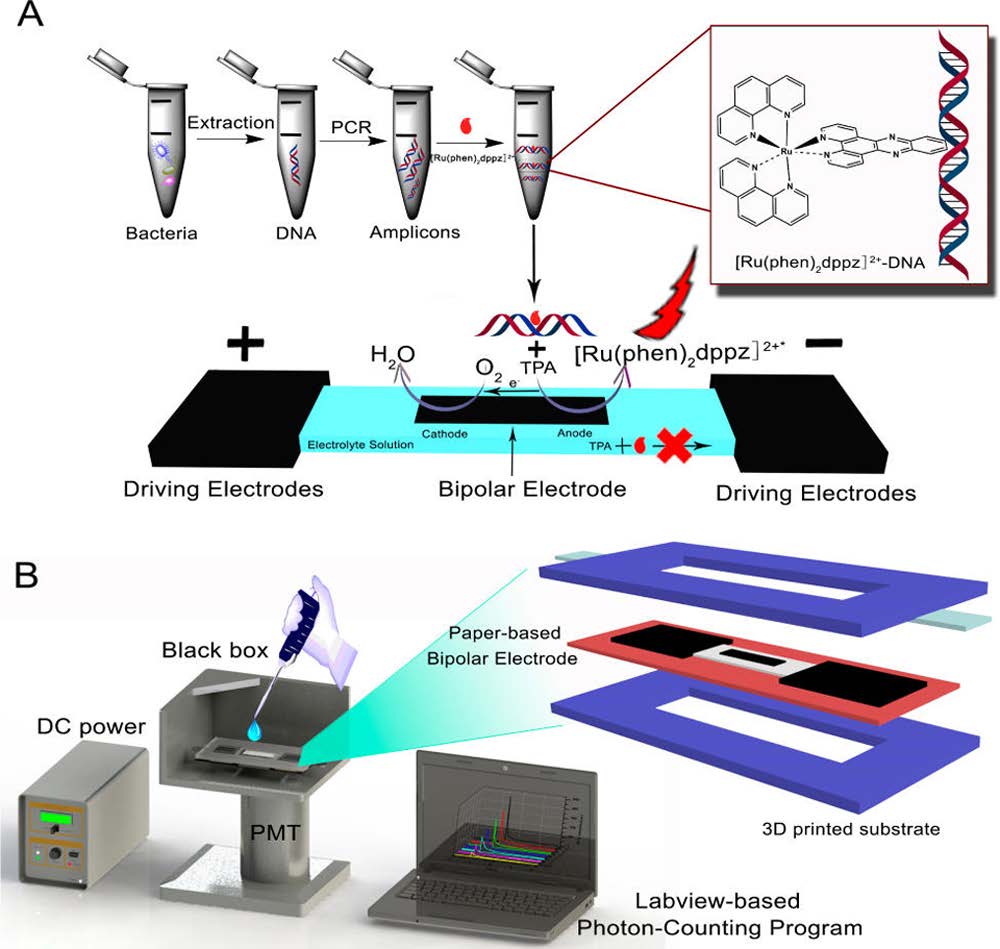博文
The Electrochemiluminescence Analysis
|
Electrochemiluminescence (ECL), also called electrogenerated chemiluminescence, refers to a light emission process in which species generated at the electrode surface undergo exergonic electron transfer reaction to form excited states that emit light. As ECL is emitted through bimolecular recombination of electrogenerated radicals, its mechanism can be divided into two categories according to the source of radicals, namely, annihilation mechanism and coreactant mechanism. As for the former, radical species are generated from a single emitter, while the latter involves a bimolecular set of electrochemical reactions between the emitter and a suitable coreactant. The emitter plays a key role in the transformation from electrical energy into radiative energy. Three types of luminophores, including ruthenium(II) complexes, luminol, and quantum dots (QDs), have been widely utilized in vast majority of ECL studies.

Figure 1. Scheme showing the sensor

Figure 2. Scheme showing the design of the immunosensor

Figure 3. Scheme of the paper BPE-ECL molecular switch system
References: Recent Advances in Electrochemiluminescence Analysis
Anal. Chem., 2017, 89, 358–371, DOI: 10.1021/acs.analchem.6b04675
https://blog.sciencenet.cn/blog-458701-1043721.html
上一篇:超级材料IN CHINA-CNTs
下一篇:Journal Citation Reports-2017 SCI-Journal Impact Factor